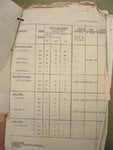A 'new' thought, if .50 cal was so substantially less than the 20mm why did the russians use 1x 20mm and 1x.50cal in most their aircraft? (someone else can do the count) Why did most of the 20mm spit have 2x20mm and 2x.50 cal? if the .50 cal was not usefull then would have saved the weight and run 1 or 20mm.
Any argument made for the 20mm being drastically different than .50 has to come to grips with thee independent decisions. My own theory is besides having the .50 cal on hand, the 20mm would create damage in soft parts and the .50 damage the hard parts.
Any argument made for the 20mm being drastically different than .50 has to come to grips with thee independent decisions. My own theory is besides having the .50 cal on hand, the 20mm would create damage in soft parts and the .50 damage the hard parts.

